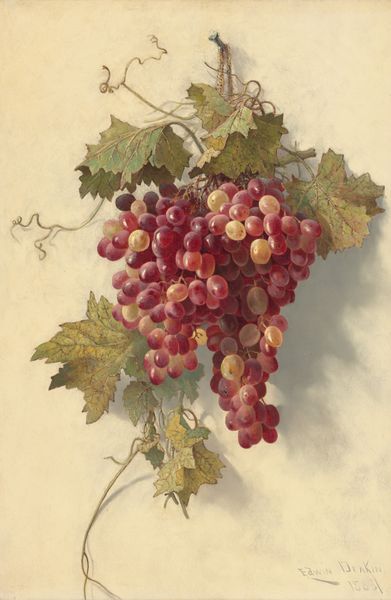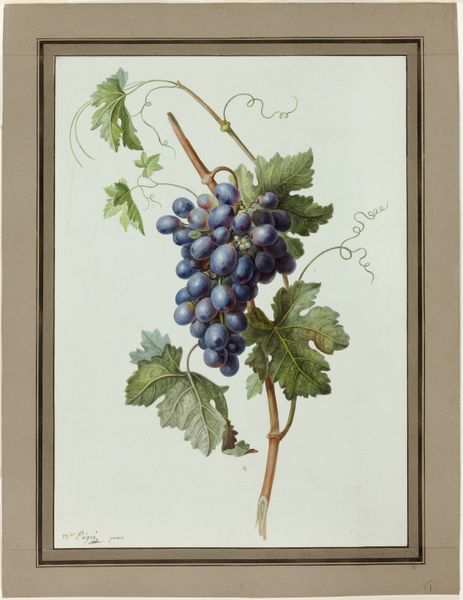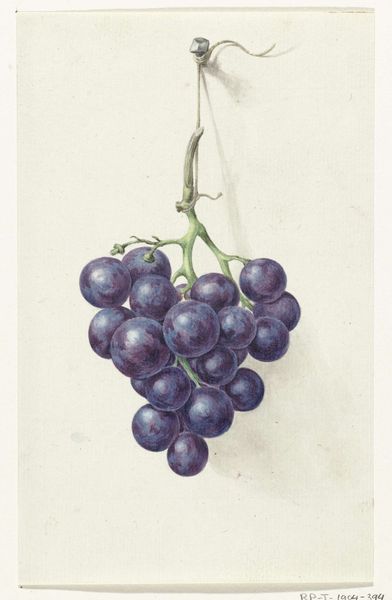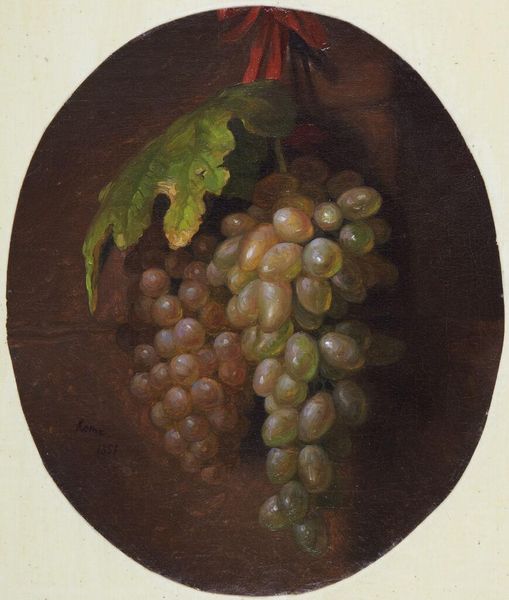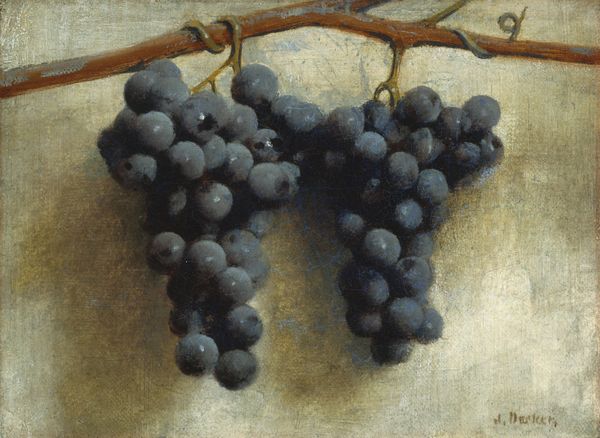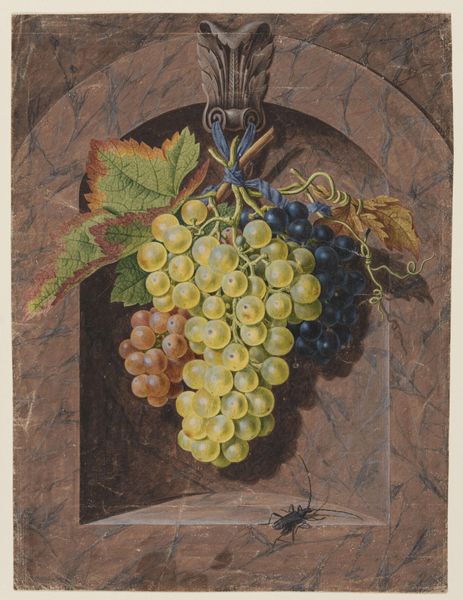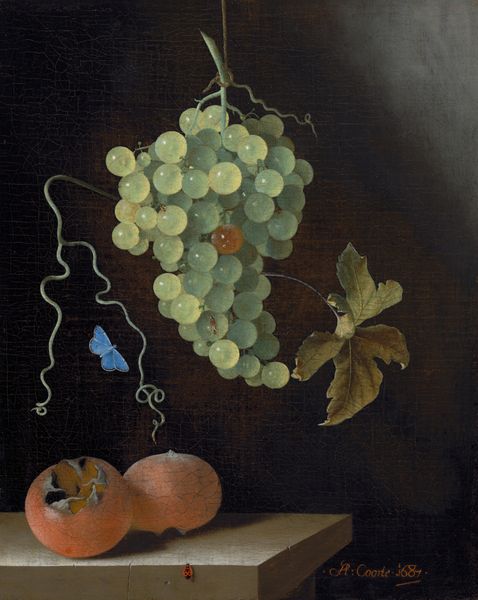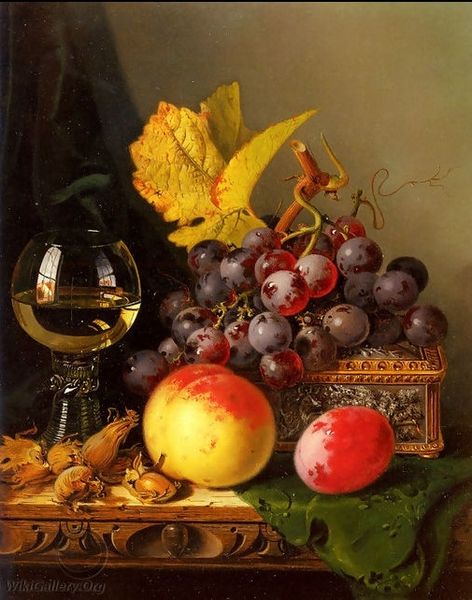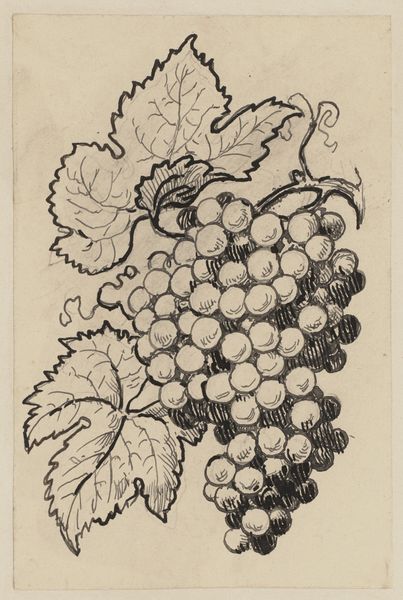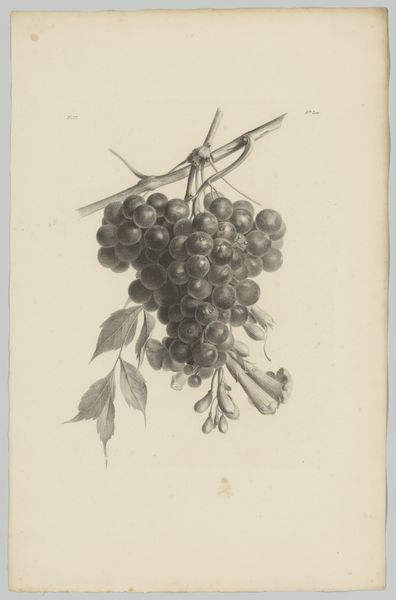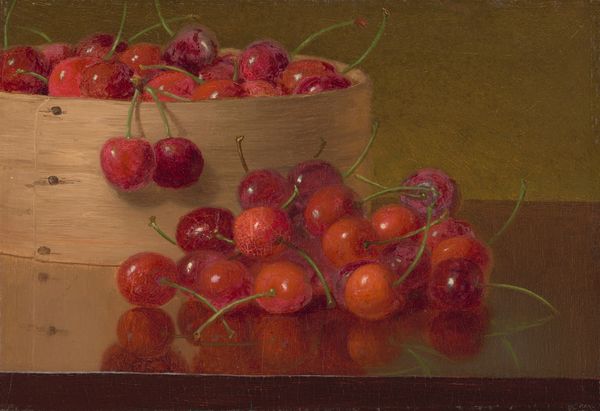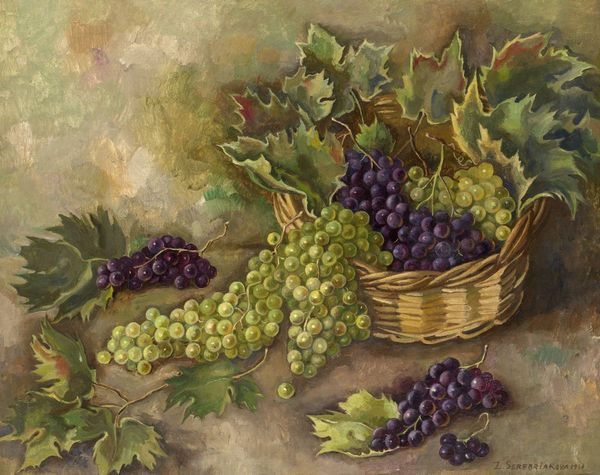
Dimensions: overall (oval): 54.61 × 44.45 cm (21 1/2 × 17 1/2 in.) framed: 73.66 × 62.87 × 10.16 cm (29 × 24 3/4 × 4 in.)
Copyright: National Gallery of Art: CC0 1.0
Curator: Looking at this still life, there's a kind of heavy stillness. It's very dark, the grapes practically glowing against that somber ground. Editor: Yes, indeed. The piece before us, entitled "Hanging Bunch of Grapes," was painted by Sarah Wilhelmina Wenzler in 1867. What interests me is how a painting like this functioned in its own time. Still lifes were commonly commissioned for the homes of the rising bourgeoisie, acting as signifiers of wealth and refined taste. Curator: It makes you wonder, doesn't it, about the physical labor involved in producing it? Preparing the oil paints, the canvas... even sourcing the subject matter. There’s an interesting contrast, you know, between this illusion of readily available food and the realities of production. Editor: Exactly! Furthermore, such paintings contributed to shaping and propagating a certain ideal of domesticity, where displays of abundance and artistry underscored the success and sophistication of the household. Who got to hang these artworks, and who only dreamed of it? The image of fruit—carefully displayed—serves a specific socio-economic purpose. Curator: Precisely! Even the way she handles the paint is intriguing. The surface is relatively smooth, suggesting a concern for detail and accuracy—almost photographic. There is that tension again between representation and the artist’s intervention in representing materials. I wonder if the smooth facture reflects the value that Victorian society placed on refinement and order. Editor: Good point. And let’s think about exhibition. Where and how were Wenzler’s works shown? This factors in how a work’s ‘meaning’ emerges in its display. Curator: A constant play, really, between the object and the values we assign to it through context and craft. Editor: Precisely! The grapes cease to be just fruit; the canvas just canvas. Curator: Food for thought indeed! Editor: Yes. Hopefully, it’s allowed visitors a brief, intriguing entry into 19th-century artistic practices.
Comments
No comments
Be the first to comment and join the conversation on the ultimate creative platform.
